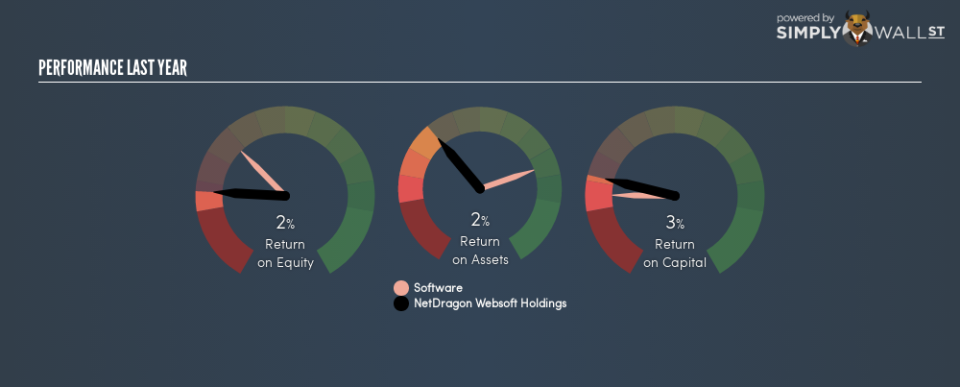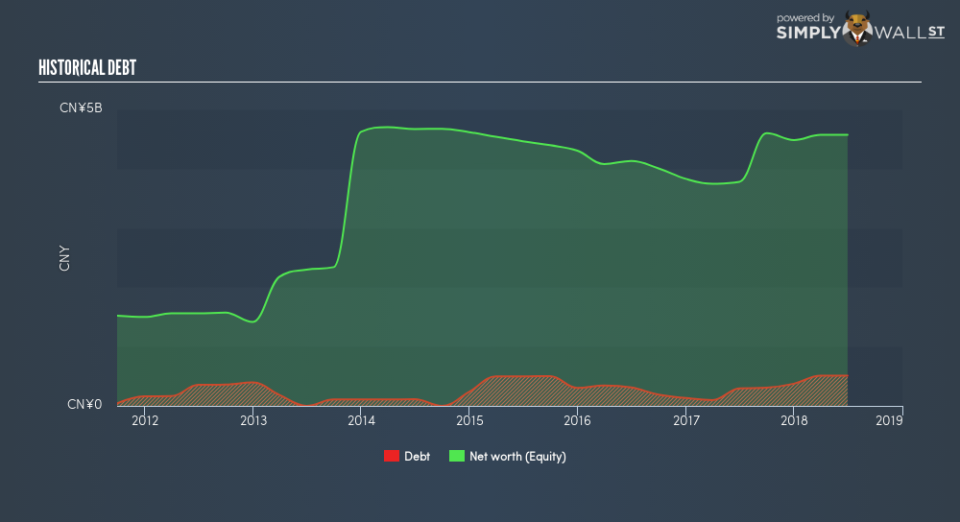Why NetDragon Websoft Holdings Limited (HKG:777) Delivered An Inferior ROE Compared To The Industry

This analysis is intended to introduce important early concepts to people who are starting to invest and want to learn about Return on Equity using a real-life example.
NetDragon Websoft Holdings Limited (HKG:777) generated a below-average return on equity of 2.1% in the past 12 months, while its industry returned 9.0%. Though 777’s recent performance is underwhelming, it is useful to understand what ROE is made up of and how it should be interpreted. Knowing these components can change your views on 777’s below-average returns. Today I will look at how components such as financial leverage can influence ROE which may impact the sustainability of 777’s returns.
View our latest analysis for NetDragon Websoft Holdings
What you must know about ROE
Return on Equity (ROE) is a measure of NetDragon Websoft Holdings’s profit relative to its shareholders’ equity. An ROE of 2.1% implies HK$0.021 returned on every HK$1 invested. In most cases, a higher ROE is preferred; however, there are many other factors we must consider prior to making any investment decisions.
Return on Equity = Net Profit ÷ Shareholders Equity
ROE is assessed against cost of equity, which is measured using the Capital Asset Pricing Model (CAPM) – but let’s not dive into the details of that today. For now, let’s just look at the cost of equity number for NetDragon Websoft Holdings, which is 8.4%. Given a discrepancy of -6.3% between return and cost, this indicated that NetDragon Websoft Holdings may be paying more for its capital than what it’s generating in return. ROE can be dissected into three distinct ratios: net profit margin, asset turnover, and financial leverage. This is called the Dupont Formula:
Dupont Formula
ROE = profit margin × asset turnover × financial leverage
ROE = (annual net profit ÷ sales) × (sales ÷ assets) × (assets ÷ shareholders’ equity)
ROE = annual net profit ÷ shareholders’ equity
Basically, profit margin measures how much of revenue trickles down into earnings which illustrates how efficient the business is with its cost management. Asset turnover shows how much revenue NetDragon Websoft Holdings can generate with its current asset base. The most interesting ratio, and reflective of sustainability of its ROE, is financial leverage. Since ROE can be inflated by excessive debt, we need to examine NetDragon Websoft Holdings’s debt-to-equity level. The debt-to-equity ratio currently stands at a low 11.1%, meaning NetDragon Websoft Holdings still has headroom to borrow debt to increase profits.
Next Steps:
While ROE is a relatively simple calculation, it can be broken down into different ratios, each telling a different story about the strengths and weaknesses of a company. NetDragon Websoft Holdings exhibits a weak ROE against its peers, as well as insufficient levels to cover its own cost of equity this year. However, ROE is not likely to be inflated by excessive debt funding, giving shareholders more conviction in the sustainability of returns, which has headroom to increase further. Although ROE can be a useful metric, it is only a small part of diligent research.
For NetDragon Websoft Holdings, I’ve put together three key factors you should further examine:
Financial Health: Does it have a healthy balance sheet? Take a look at our free balance sheet analysis with six simple checks on key factors like leverage and risk.
Valuation: What is NetDragon Websoft Holdings worth today? Is the stock undervalued, even when its growth outlook is factored into its intrinsic value? The intrinsic value infographic in our free research report helps visualize whether NetDragon Websoft Holdings is currently mispriced by the market.
Other High-Growth Alternatives : Are there other high-growth stocks you could be holding instead of NetDragon Websoft Holdings? Explore our interactive list of stocks with large growth potential to get an idea of what else is out there you may be missing!
To help readers see past the short term volatility of the financial market, we aim to bring you a long-term focused research analysis purely driven by fundamental data. Note that our analysis does not factor in the latest price-sensitive company announcements.
The author is an independent contributor and at the time of publication had no position in the stocks mentioned. For errors that warrant correction please contact the editor at editorial-team@simplywallst.com.


